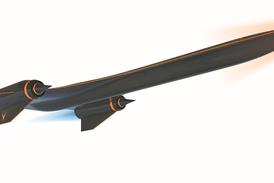Report says safety advances in technically advanced aircraft are not being exploited due to inadequate instruction
Safety improvements touted for new-generation light aircraft have yet to show up in general-aviation accident statistics, and will not unless training is improved, suggests a report on so-called technically advanced aircraft (TAA) by the US Aircraft Owners and Pilots Association's (AOPA) Air Safety Foundation (ASF).
TAAs provide the potential for increased safety, says the ASF, but to obtain this "available safety" pilots must receive additional training on the specific systems in their aircraft to enable them to exploit the capabilities and operate within the limitations of the systems.
"However, the existing training infrastructure currently is not able to provide the needed training in TAAs," the report says.
A TAA is defined by the US Federal Aviation Administration as an aircraft equipped with at least a moving-map display, instrument flight rules-approved GPS navigator and autopilot. The ASF says 92% of the 1,758 light aircraft delivered last year were either true TAAs or had TAA-like equipment.
After studying 12 "new TAA" (Cirrus SR20/22) and nine "classic TAA" (Cessna 182) accidents, the ASF concludes they closely resemble typical non-TAA accidents, with most being caused by the pilot's lack of experience and a chain of poor decisions, and not directly related to the aircraft. "Poor judgement will always be poor judgement, regardless of the aircraft being flown," says executive director Bruce Landsberg.
The ASF identifies two areas that could affect the safety of TAAs: the increased speed and different handling characteristics of some new-design aircraft, which could lead less-experienced pilots into difficulty; and the need to shift from a traditional GA piloting approach based on physical flying skills towards "a more mental approach" emphasising situational awareness and decision making.
The report concludes TAA training should begin with interactive avionics training via CD/DVD or on line. The next level should be a task trainer simulating the GPS navigator or glass cockpit.
"Ideally, the next step is a cockpit simulator or flight-training device," says the ASF. "As much actual short, high workload cross-country experience as possible" is then recommended, with heavy use of autopilot critical.
With improved training, the ASF concludes that "TAA safety problems can be addressed, and the additional available safety of TAAs to address traditional causes of GA accidents can be realised".
GRAHAM WARWICK/WASHINGTON DC
Source: Flight International























